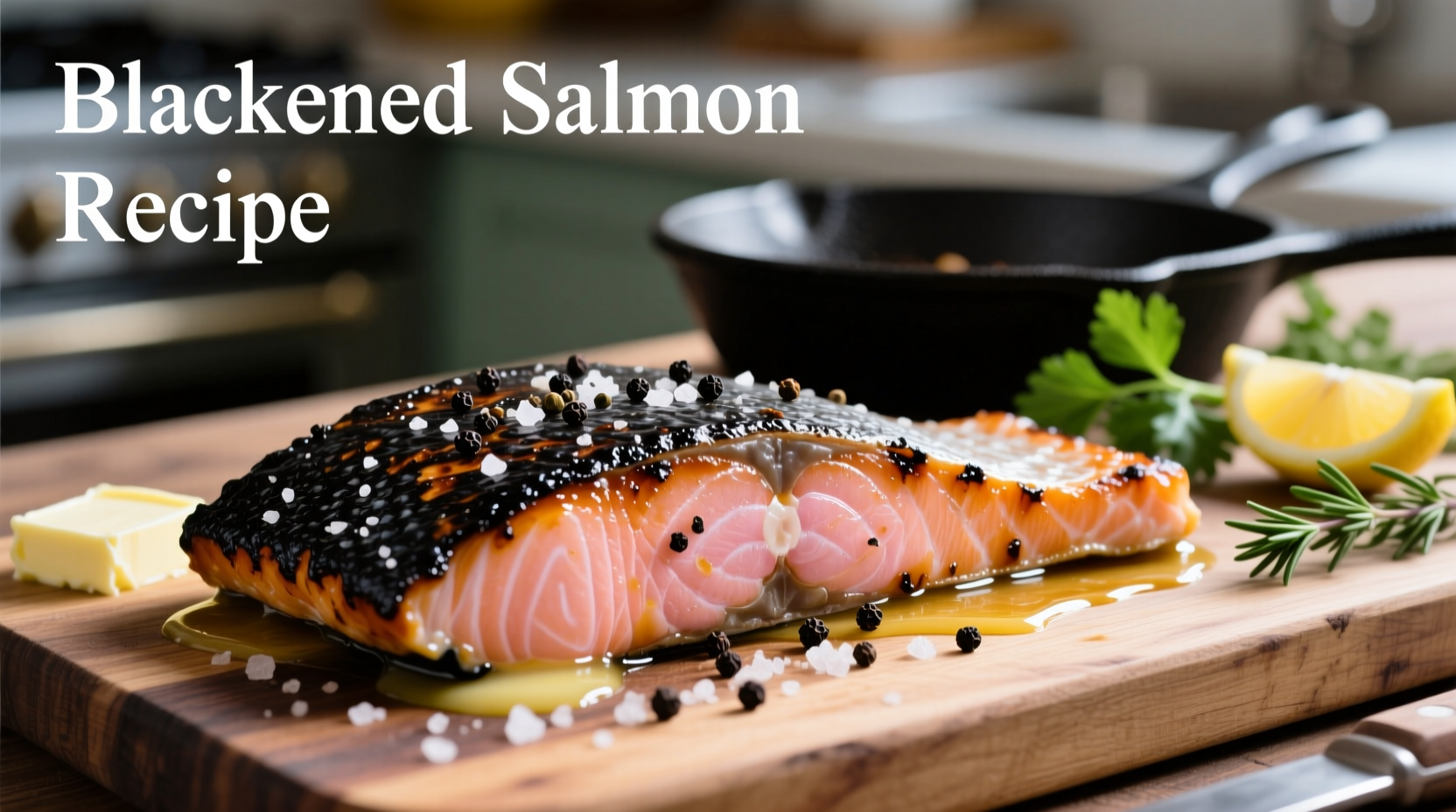What Makes Blackened Salmon Different?
Blackened salmon isn't burnt fish—it's a precise cooking technique developed by Chef Paul Prudhomme in the 1980s that creates a flavorful crust through a combination of high heat and spice coating. The "blackened" appearance comes from the Maillard reaction, not charring. Understanding this distinction prevents common beginner mistakes that lead to dry, overly spicy, or burnt results.
Essential Tools You'll Need
Before starting, gather these kitchen essentials:
- Cast iron skillet (critical for even high-heat cooking)
- Spatula with thin edge
- Instant-read thermometer (FDA recommends 145°F internal temperature for safe fish consumption)
- Mixing bowl for spice blend
- Paper towels for drying salmon
| Salmon Thickness | Cooking Time | Heat Level |
|---|---|---|
| 1 inch | 6-8 minutes | Medium-high |
| 1.5 inches | 8-10 minutes | Medium |
| Skin-on fillets | Extra 2 minutes skin-side down | Medium-high to start |
The Authentic Blackening Spice Blend
Store-bought blends often contain excessive salt and fillers. Create your own with these precise proportions for balanced heat and flavor:
- 2 tablespoons paprika (smoked for depth)
- 1 tablespoon garlic powder
- 1 tablespoon onion powder
- 2 teaspoons cayenne pepper (adjust for heat preference)
- 2 teaspoons dried thyme
- 2 teaspoons dried oregano
- 1 teaspoon freshly ground black pepper
- 1 teaspoon salt
- 1 teaspoon cumin
Mix thoroughly in a shallow dish. For authentic New Orleans flavor, toast whole spices before grinding—this professional technique releases essential oils that dramatically improve flavor complexity.

Preparing Your Salmon for Blackening
Proper preparation ensures your salmon cooks evenly and develops the perfect crust:
- Pat fillets completely dry with paper towels—moisture prevents proper searing
- Bring salmon to room temperature (15-20 minutes)
- Season lightly with salt 10 minutes before cooking
- Coat generously with spice blend, pressing gently to adhere
- Let rest 5 minutes to allow spices to hydrate
Mastering the Cooking Technique
Follow these critical steps for flawless results:
- Preheat cast iron skillet over medium-high heat for 5 minutes until smoking slightly
- Add 1 tablespoon oil with high smoke point (avocado or canola)
- Place salmon spice-side down first (this creates the crust)
- Cook undisturbed for 3-4 minutes until crust forms
- Flip carefully and cook 2-4 minutes more depending on thickness
- Check internal temperature—remove at 140°F (it will rise to 145°F while resting)
- Rest 3-5 minutes before serving
Avoiding Common Blackening Mistakes
Even experienced home cooks make these errors:
- Using low smoke point oils: Butter burns at blackening temperatures—use refined oils
- Overcrowding the pan: Causes steaming instead of searing
- Moving salmon too soon: Prevents proper crust formation
- Using wet fish: Always pat thoroughly dry before seasoning
- Skipping the rest period: Resting allows juices to redistribute
Serving Suggestions for Perfect Presentation
Pair your blackened salmon with complementary sides that balance the bold flavors:
- Lemon-dill rice pilaf
- Roasted asparagus with garlic
- Cucumber avocado salad
- Mango salsa for a sweet contrast
- Light citrus aioli for dipping
Squeeze fresh lemon juice over the top just before serving to cut through the richness and brighten the flavors. For meal prep enthusiasts, properly stored blackened salmon maintains quality for up to three days in the refrigerator.











 浙公网安备
33010002000092号
浙公网安备
33010002000092号 浙B2-20120091-4
浙B2-20120091-4